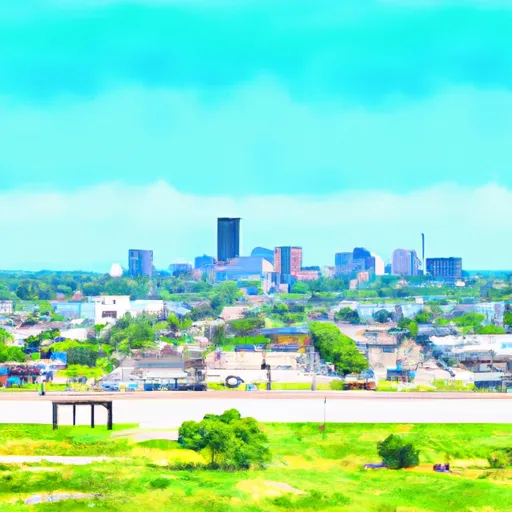-
 Snoflo Premium
Snoflo Premium
Get unlimited access to all our content
With no Ad interruptions! - Start Your Free Trial Login with existing account
Itasca
Eden Index
Climate
8.3
•
Recreation
2.2
•
Community
2.2
•
Safeguard
4.6/10

Itasca, Texas is a small town located in Hill County, approximately 50 miles south of Fort Worth. It has a humid subtropical climate characterized by hot summers and mild winters. The town experiences average high temperatures of around 95°F (35°C) in the summer months and average low temperatures of around 35°F (2°C) in winter.
Hydrologically, Itasca lies in the Trinity River watershed. The area is dotted with small creeks and streams that contribute to the water supply in the region. The town's proximity to Lake Whitney, one of the largest reservoirs in Texas, offers excellent opportunities for fishing, boating, and water sports. The lake is known for its diverse fish population, including largemouth bass, white bass, and catfish.
Outdoor enthusiasts in Itasca can also explore nearby parks and forests, including the Meridian State Park and the Hill County State Natural Area. These areas provide scenic hiking trails, picnic spots, and opportunities for wildlife viewing. The Itasca State Wildlife Management Area is another attraction, offering hunting opportunities for deer, turkey, and small game.
In summary, Itasca, Texas offers a pleasant climate, a hydrological system connected to the Trinity River watershed, and a range of outdoor recreation opportunities centered around Lake Whitney and nearby parks and forests.
What is the Eden Index?
The Snoflo Eden Index serves as a comprehensive rating system for regions, evaluating their desirability through a holistic assessment of climate health, outdoor recreation opportunities, and natural disaster risk, acknowledging the profound impact of these factors on livability and well-being.
Climate Health Indicator (CHI): 8.3
Itasca receives approximately
967mm of rain per year,
with humidity levels near 84%
and air temperatures averaging around
19°C.
Itasca has a plant hardyness factor of
8, meaning
plants and agriculture in this region tend to thrive here all year round.
By considering the ideal temperature range, reliable water supplies, clean air, and stable seasonal rain or snowpacks, the Climate Health Indicator (CHI) underscores the significance of a healthy climate as the foundation for quality living.
A healthy climate is paramount for ensuring a high quality of life and livability in a region, fostering both physical well-being and environmental harmony. This can be characterized by ideal temperatures, reliable access to water supplies, clean air, and consistent seasonal rain or snowpacks.
Weather Forecast
Streamflow Conditions
Middle Brazos-Bosque
Area Rivers
Middle Brazos-Bosque
Snowpack Depths
Middle Brazos-Bosque
Reservoir Storage Capacity
Middle Brazos-Bosque
Groundwater Levels
Recreational Opportunity Index (ROI): 2.2
The Recreational Opportunity Index (ROI) recognizes the value of outdoor recreational options, such as parks, hiking trails, camping sites, and fishing spots, while acknowledging that climate plays a pivotal role in ensuring the comfort and consistency of these experiences.
Access to outdoor recreational opportunities, encompassing activities such as parks, hiking, camping, and fishing, is crucial for overall well-being, and the climate plays a pivotal role in enabling and enhancing these experiences, ensuring that individuals can engage in nature-based activities comfortably and consistently.
Camping Areas
| Campground | Campsites | Reservations | Toilets | Showers | Elevation |
|---|---|---|---|---|---|
| Little Elm Park | None | 547 ft | |||
| Taylor - Granger Lake | None | 543 ft | |||
| Isle du Bois - Roberts Lake State Park | 182 | 685 ft | |||
| Johnson Branch - Roberts Lake State Park | 163 | 685 ft | |||
| Wilson Fox - Granger Lake | None | 542 ft |
Nearby Ski Areas
Catastrophe Safeguard Index (CSI):
The Catastrophe Safeguard Index (CSI) recognizes that natural disaster risk, encompassing floods, fires, hurricanes, and tornadoes, can drastically affect safety and the overall appeal of an area.
The level of natural disaster risk in a region significantly affects safety and the overall livability, with climate change amplifying these risks by potentially increasing the frequency and intensity of events like floods, fires, hurricanes, and tornadoes, thereby posing substantial challenges to community resilience and well-being.
Community Resilience Indicator (CRI): 2.2
The Community Resilience Indicator (CRI) recognizes that education, healthcare, and socioeconomics are crucial to the well-being of a region. The CRI acknowledges the profound impact of these elements on residents' overall quality of life. By evaluating educational resources, healthcare accessibility, and economic inclusivity, the index captures the essential aspects that contribute to a thriving community, fostering resident satisfaction, equity, and social cohesion.

